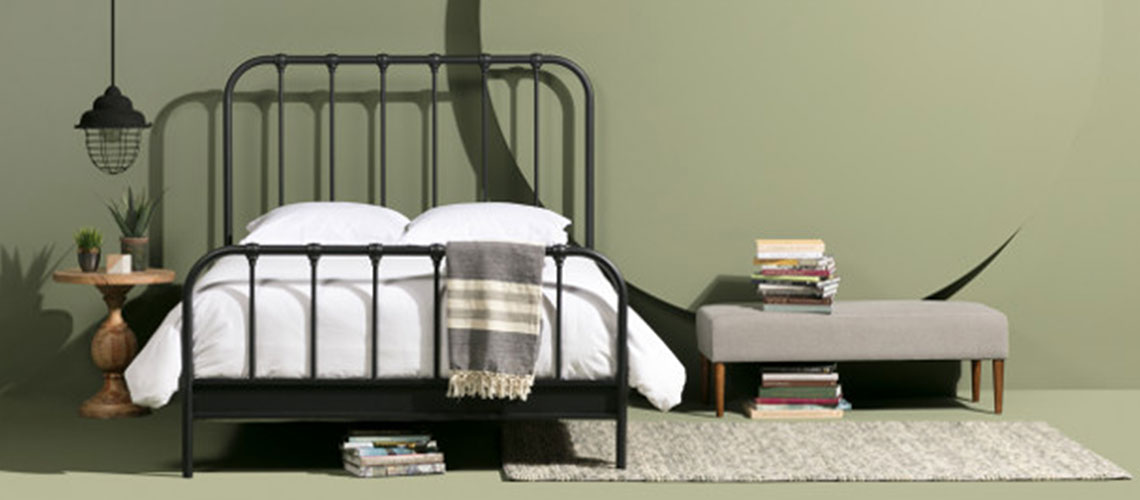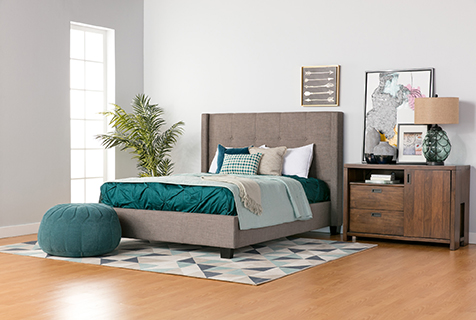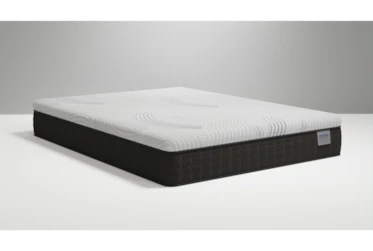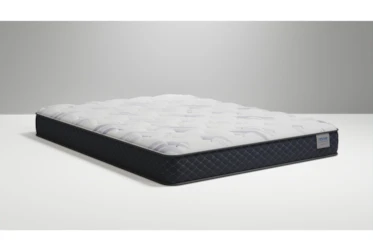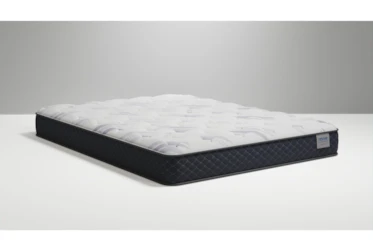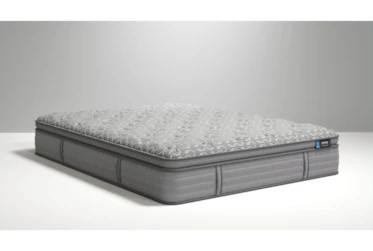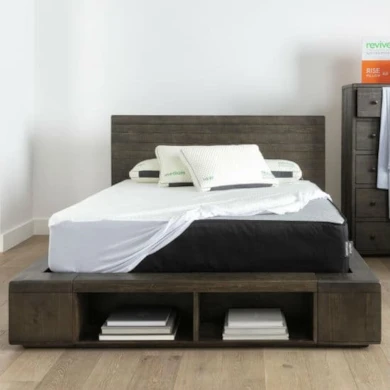How Often Should I Replace My Mattress?
Average Mattress Lifespan
For durability, quality memory foam mattresses definitely beat other mattress types. Because of their packed construction and adaptable cells, memory foam mattresses can endure up to ten years of nightly use before they start to wear down.
Why Should You Replace Your Mattress?
Replacing your mattress is not just about comfort, or because it’s just the ‘thing to do.’ It’s also about health. Here is why it matters:
- Sagging. Your old mattress is sagging, and your back hurts after sleeping on it. If your mattress is sagging, you notice dents or lopsidedness (especially in the center of the mattress, where you sleep) then it’s definitely time for a new one, as the lack of spinal support can lead to a host of orthopedic conditions. Even if you don't feel the sagging, it could still be there (even slight sagging can cause big issues); if you start to notice early signs, rotate your mattress to help reduce major pressure points. You may also want to invest in an extra mattress layer to place on top of the sagging to help with evening out your bed's surface and create a firmer, more comfortable and more orthopedically-aligning sleeping zone. If, after you've tried the extra mattress layer, you still experience discomfort due to sagging, it's time for a new mattress.
- Dust mites. Dust and dust mites can seep into your air passageways, making it hard to breathe easy – even if you don’t have allergies. According to the American Lung Association, reducing dust mites in the home is critical for people with sensitivities to them. Along with other household items such as drapes and curtains, mattresses are one of the most common places dust mites can grow; if you haven't already, buy a mattress protector – and never sleep on a mattress without one! While a little bit of care and cleaning can help prevent and remove any mattress-prone dust mites, sometimes, deeply settled mites are impossible to remove (even when using the most high-powered of vacuums and beating your mattress with the brutest of forces you can muster!). If you notice wheezing or coughing when sleeping, it could be due to those invisible sleeping partners nestled deep into the fibers of your bed – and when that day comes when cleaning and all the preventative care in the world have lost their powers, that's when you know it's time for a new mattress.
- Creaking. Your old mattress is creaking, and you’re tired of waking up to your partner’s every move. Due to broken coils or springs and wobbly frames, creaking isn't just annoying; because creaking can cause you to wake up more times in a night, interrupting crucial REM cycles, it's also detrimental to your sleep, quality of life and overall health. Of course, minor creaking usually isn't anything to worry about, but if the noises start growing louder and more frequent and you find yourself more tired when you wake up than when you went to bed, it's probably time to start seriously considering buying a new bed. Before you invest in the latest and greatest and shell out your savings on a luxurious sleep experience, make sure to evaluate whether the creaking is in fact caused by your mattress – in some cases, it could all just be attributed to the box spring, and a simple (and less expensive) foundation replacement will do the trick.
- Discomfort. Because of how uncomfortable it is, your old mattress is causing you to regularly lose out on sleep, which in turn is slowing down your reaction times, increasing your chance for developing heart disease, and weakening your body’s ability to fight infections. If that all sounds scary, it's because it is: according to the American Heart Association, little and low quality sleep can have a detrimental effect on your memory, mood and even internal organs. While there are concrete causes of discomfort (creaking, allergies, etc.), sometimes, the underlying condition is harder to pin down or may not even exist at all; over time, due to years or decades of use, a mattress can just lose its luster - just stop giving you that magical out-of-the-box comfort that made you fall in love with it in the first place. If you find yourself tossing and turning during sleep but can't put a finger on why, it may be time to ramp up the comfort and buy a new, better mattress.
- Allergic reactions. Along with spinal pain, an old mattress can also trigger or intensify allergic reactions. Over time, your mattress can accumulate dust, mildew and other allergens – and negatively affect overall health. Since allergens are often invisible, it's hard to know when they're in the air, on your mattress – or in your mattress, meaning it's incredibly easy to breathe them in and out all night without realizing it. While there are no "detectors" for allergens (just the warning signs like coughing, wheezing and congestion), there are steps you can take to make sure your sleeping environment is free from them, including keeping your sheets washed and clean and your mattress protected with a waterproof cover or lining. Even the most meticulous preventative process isn't perfect, and micro allergens can sneak into mattresses no matter how much you washing and cleaning you do; after years of use, an old mattress can accumulate harmful levels of allergens and needs to be replaced.
- Joint pain. Waking up with sore muscles, a stiff back and/or joint pain or weakness is another sign that the innerspring or foam cells are starting to break down and not providing the proper spinal support. Whether you sleep on your side, back or stomach, you're placing pressure on the joints, and over time, the highest pressure points will become obvious: the center and sides of your mattress will start feel less thinner, softer and bumpier. If you start to notice certain areas of your mattress feeling less comfortable than others, that means that the way you are sleeeping is placing more pressure on those areas – and rotating your mattress around every few months (so that your hips and shoulders, the heaviest pressure points when sleeping, won't fall into the same grooves night after night) is the best way to help prevent your mattress from wearing out even further. If, though, rotating still has you waking up with joint pain, it probably means the matress itself has lost critical spinal support and needs to be replaced.
How Often Should You Replace Your Mattress?
While there are signs that your mattress should be replaced, there isn't a hard and fast rule about when it needs to be done. Usually, a mattress's comfort and support will start showing signs of wear after ten years, but a lot of different factors come into play, such as mattress material, the weight of the sleeper and how well the mattress has been taken care of. One way to know for sure if it's time to be replaced, though, is when you start waking up with back pain, a sign that your mattress is lacking critical support.
How Do You Know When You Need a New Mattress?
One of the best ways to tell whether it's time for a new mattress is by listening to your body. If you have trouble sleeping through the night due to tossing, turning and discomfort, don't wait any longer. Sleep is the most important investment you will ever make, and a comfortable mattress is the best way to get it.
Should You Flip a Mattress?
Yes – but ONLY if it is a double-sided mattress. You can check whether or not you need to flip or rotate your mattress by consulting the manufacturer’s instructions on the mattress tag/label.
How Do You Make Your Mattress Last Longer?
Regular maintenance of your mattress and following a few key prevention principles can go a long way in ensuring it lasts as long as possible. Here are three ways to get there:
- Do not eat in bed. In mattress world, eating in bed is the worst crime one can commit. No matter how careful you are, crumbs have a way of escaping – and escape, seep, and nestle their way into the depths of your mattress they will – turning your mattress into a breeding ground for all kinds of gross bacteria and mold.
- Do not let your pets share your bed. We get it: allowing Max to snuggle with you in bed is tempting. But resisting the urge will reap rewards – or rather, prevent a slew of nasty side effects. (The soft, porous, dark insides of a mattress are actually the perfect environments for roundworms, and other parasites common to pets, to thrive.)
- Rotate/flip the mattress (if needed). If your mattress’s manufacturer’s instructions state that the bed needs to be flipped or rotated every few months, then it says so for a reason. A major key for lengthening the lifespan of your mattress as much as possible is simple: follow the instructions!
How Can I Make My Bed Firmer?
The best option for ensuring you’re getting enough firm support is to make sure the mattress you’ve purchased is of high quality to begin with. If you find yourself stuck with a mattress that’s starting to sag, though, there are a few DIY steps you can take to increase the firmness:
- Place a mattress topper. When most people think of mattress toppers, they think of those soft foam layers designed to make a bed more ‘cushiony.’ But did you know there are firming toppers available? Look into firm (or even extra-firm) memory foam mattresses toppers to add on to a weakening mattress – just make sure it’s a topper and not a pad! (Toppers labeled as ‘pads’ tend to encompass the softer, ‘cushiony’ types of mattress toppers.)
- Lower the thermostat. A warm room, believe it or not, can soften mattresses made of 100% foam. Lower the temperature of your room for a few days; if you start to notice a difference in how firm the mattress feels, consider changing your nightly habitat. Sleeping with a window open, adjusting the thermostat or cranking the AC have all been reported to make a difference in all-foam beds; just make sure to double up on blankets and pajamas for your own warmth!
- Look into your sheet sizes. Sometimes, loose bedding or the wrong sheet size can make it feel like your mattress is softer than it really is. If you are using the right sheet size and still feel like the sheets may to be blame, check the corners: a proper, ‘hotel-style’ bed will have each corner and edge pulled tightly under the bed for a flat, even, firmer top-surface feel.
- Flip or rotate your mattress. If your mattress is double-sided, then flipping it every few months can ensure even distribution of pressure.
How to Extend the Life of Your Mattress
Here is everything you need to know on how to extend the life of your mattress – and get the sleep you need for years to come.
1. Rotate (and flip) your mattress.
Sleeping on the same side of your bed night after night for years at a time can place undue pressure on your mattress, causing it to sag prematurely, and leading to loss of proper spinal support. To prevent this from happening, it is recommended that you flip your mattress onto its opposite side at least every six months – and rotate it every three.
2. Clean your mattress regularly.
Even if you regularly wash your sheets, your mattress can still absorb dust, dirt and bacteria; the slow build-up over time could cause your mattress to deteriorate – and lead to some serious health risks. Fortunately, this problem comes with a simple solution: baking soda! Sprinkle on – and then vacuum – no more than a pinch to help absorb and eliminate environmental toxins in your mattress.
3. Use a protective mattress covering.
If you do not have a protective layer between the sheets you sleep on and the mattress itself, then all the work you have put into cleaning and vacuuming your mattress will mean nothing! Either a thin covering or thick pad will get the job done – but go with thick if you also want extra cushioning.
4. Invest in a quality box spring or bunky board.
Quality mattress bases, like box springs, foundations and bunky boards, do not just lift your mattress above ground – they actually help to preserve its shape by providing a flat, sturdy surface that will not give in with use.
Featured Products
— More Great Articles —
Related Categories
Read the Latest
Editorial Disclaimer: Articles featuring tips and advice are intended for educational purposes and only as general recommendations. Always practice personal discretion when using and caring for furniture, decor and related items.
